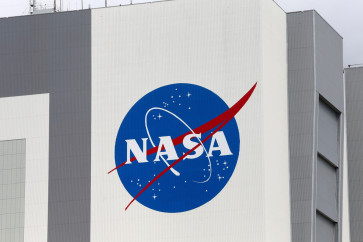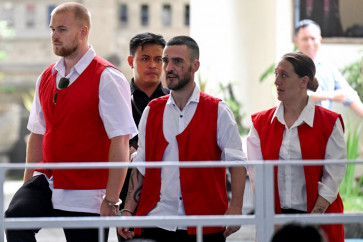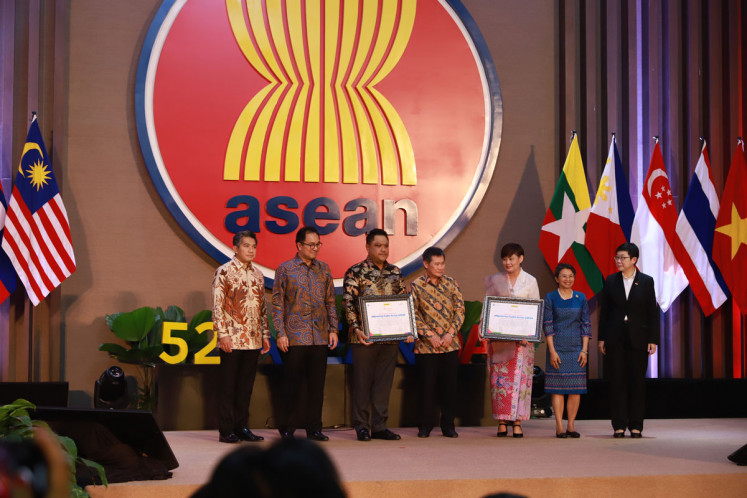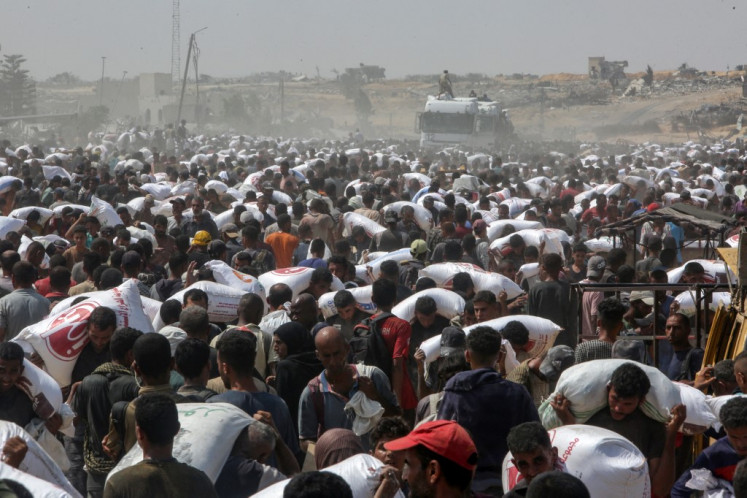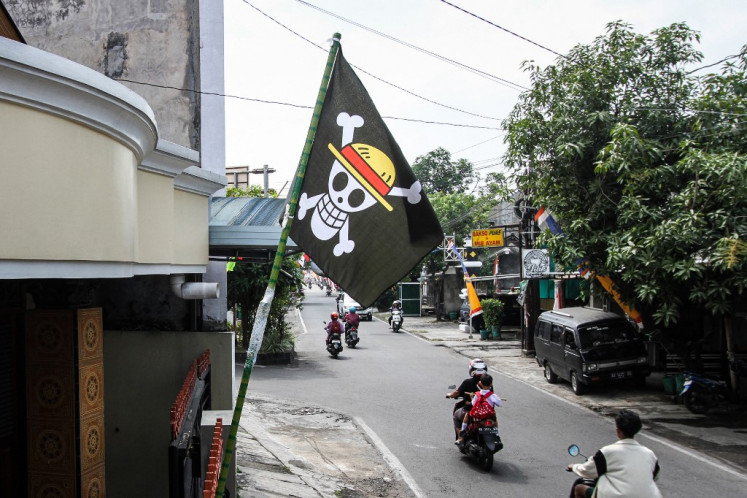Popular Reads
Top Results
Can't find what you're looking for?
View all search resultsPopular Reads
Top Results
Can't find what you're looking for?
View all search resultsCan Washington finally resolve the Iran nuclear stalemate?
Iran may be willing to agree to a ceiling on uranium enrichment in return for sweeping sanctions relief and the right to retain its existing nuclear infrastructure.
Change text size
Gift Premium Articles
to Anyone
A
fter three rounds of indirect United States-Iran talks in Oman and Italy, and with more planned, a clear pattern has emerged: Both sides are probing what is possible without locking themselves into rigid conditions.
This cautious dance reflects Iran’s longstanding preference for negotiations that leave room for maneuver, as well as a US administration that is light on depth but heavy on the need for perceived victories; desperate to showcase its ability to “close the deal”, which is a legacy notion associated with President Donald Trump. Yet so far, tangible progress remains elusive.
What is striking this time around is the tenor of the engagement. Neither side appears in a hurry, nor do they seem interested in dramatic gestures. Instead, what we are witnessing is a slow, tactical chess match: Washington searching for a legacy-defining diplomatic victory without the baggage of military entanglement, and Tehran probing the limits of Western patience, sanctions and strategic tolerance. The language emerging from the meetings, such as “positive”, “constructive” and “ongoing”, bears the hallmark of diplomatic ambiguity, signaling activity without commitment.
The stakes, however, are anything but abstract. The core concern remains unchanged: Preventing Iran from acquiring nuclear weapons capability. Tehran continues to deny any intention of building a bomb, yet its uranium enrichment program, which is now enriched to 60 percent purity, is perilously close to weapons-grade. Its stockpiles have grown, its centrifuges have advanced and its transparency has diminished, particularly since it began curtailing cooperation with the International Atomic Energy Agency (IAEA) in 2021.
For the Trump administration, now in its second term, this presents both an opportunity and a minefield. Ever eager for a dramatic foreign policy achievement, Trump may see the Iran file as low-hanging diplomatic fruit ripe for a deal that can be framed as historic, perhaps even worthy of accolades. But ambition does not equal strategy, and a misstep could entrench regional instability for years to come.
One of the central dilemmas facing US policymakers is defining what a “good” deal looks like, and for whom. Iran may be willing to agree to a ceiling on enrichment levels, perhaps at 4 percent, well below weapons-grade but sufficient for civilian energy use. In return, Tehran would likely demand sweeping sanctions relief and the right to retain its existing nuclear infrastructure, including advanced centrifuges and stockpiles below the 60 percent threshold.
Such a framework might seem acceptable to Western negotiators eager to buy time and prevent outright proliferation. But for regional stakeholders, particularly Israel, this would be a bitter pill. Israeli leaders have consistently opposed anything short of a total dismantling of Iran’s nuclear capability, including the destruction of highly enriched uranium stockpiles and a rollback of technological progress. What they envision is a Libya-style denuclearization: Complete, verifiable and irreversible. Anything less is viewed in Jerusalem as a prelude to conflict, not peace.
The Arab Gulf states, meanwhile, have a different set of concerns. While they share Israel’s suspicion of Iran’s nuclear ambitions, their broader anxiety centers on Tehran’s regional behavior. Iran’s support for proxy militias in Yemen, Lebanon, Iraq and Syria remains a destabilizing force.
The Joint Comprehensive Plan of Action’s original flaw, critics argue, was that it focused too narrowly on the nuclear issue while ignoring the broader architecture of Iran’s malign regional activities. The Gulf states fear that history might repeat itself, with Tehran pocketing economic gains while continuing to fuel sectarian conflict across the Middle East.
Yet there are signs that Iran may be more pliable than it appears. Economically, the country is on the ropes. Years of US-led sanctions have crushed key sectors, drained government coffers and triggered widespread domestic discontent. The protests following the death of Mahsa Amini in 2022 were not isolated events, but symptoms of deeper fissures between Iran’s aging revolutionary leadership and a restless, digitally connected younger generation.
Even the regime’s carefully maintained image of invulnerability has taken hits. The explosion at the Shahid Rajaee port, which reportedly involved ballistic missile fuel, raised questions about internal safety and competence. Meanwhile, Iran’s strategic depth is under pressure: Hezbollah’s standing in Lebanon is eroding; Assad’s government is ousted in Syria; and Hamas has faced severe setbacks after its October 2023 attack on Israel, which was met with unprecedented retaliation.
Tehran may therefore be open to a recalibration; not out of ideological transformation, but out of cold strategic calculus. A deal that stabilizes the economy, restores access to global markets and reduces domestic unrest might be worth concessions, so long as those concessions preserve its nuclear latency and regional influence.
At the same time, broader geopolitical shifts complicate the landscape. Trump’s return to office has coincided with growing skepticism among European allies, many of whom worry that Washington’s diplomatic posture is increasingly reactive rather than strategic.
Reports that Trump’s emissary, Steve Witkoff, has held frequent meetings with Vladimir Putin in Moscow have raised eyebrows in Brussels and Berlin. Are these discussions merely symbolic? Or do they signal a potential alignment between Moscow and Washington on Middle Eastern matters, including Iran?
Iran, for its part, may see Trump’s style as a strategic opening. Unlike Biden, who insisted on multilateral coordination, Trump has historically preferred bilateral theatrics, such as high-stakes summits and handshake diplomacy. Tehran might be betting that offering symbolic gestures, perhaps new contracts with Boeing, or promises of oil projects open to US investors, could entice the White House into a lopsided deal. Trump’s transactional worldview, after all, prizes visible outcomes over structural reforms.
Even if a nuclear deal is reached, the question remains: What kind of peace does it secure? Does it buy time for further diplomacy, or merely delay the inevitable? More troublingly, could a poorly constructed agreement trigger a new arms race in the region?
What is required now is not just a deal, but a strategy; one that integrates nuclear containment with regional deterrence, economic engagement with human rights concerns and short-term diplomacy with long-term realism. The challenge for Washington is to resist the allure of an easy victory and insist on one that is enforceable, comprehensive and aligned with the broader security architecture of the Middle East.
Whether the Trump administration is capable of such strategic foresight remains uncertain. The President’s record on foreign policy has been erratic, careening from bold gestures to abrupt withdrawals, often with little follow-through. Yet history has a way of offering second chances.
If Trump seeks to redefine his legacy beyond tariffs and tweets, crafting a durable, verifiable agreement with Iran, meaning one that earns both domestic credibility and international respect, would be a formidable place to start.
Washington may yet resolve the nuclear impasse. But to do so, it must first resolve its own ambivalence: Is it seeking peace, or just a headline?
***
The writer is a political and defense analyst based in Bangladesh.




